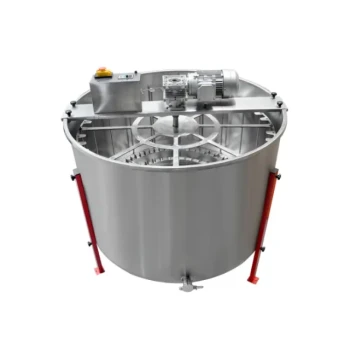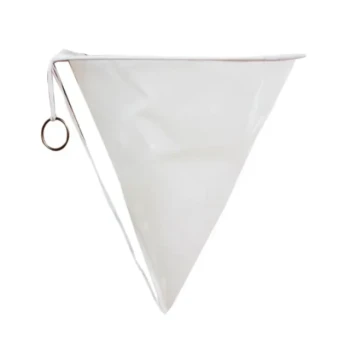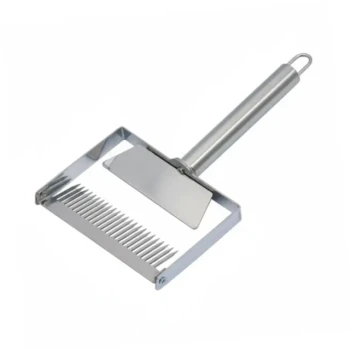For a small apiary of one to two hives, a 2-frame extractor is a practical and sufficient choice. As your operation grows to 10-15 hives, you should consider a 6-frame radial or 3-frame tangential model. For apiaries with more than 15 hives, an 8-frame or larger extractor becomes necessary to manage the harvest efficiently.
Choosing an extractor is not just about matching a number to your current hive count. It's a long-term investment in your time and labor, where balancing upfront cost against future efficiency is the most critical calculation.
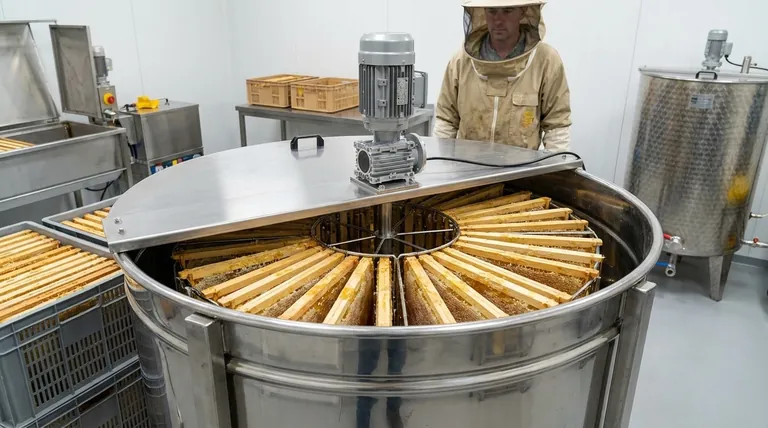
Matching Extractor Size to Your Apiary
The right extractor makes honey harvesting a rewarding process rather than a frustrating chore. Your choice should be directly proportional to the scale of your operation, both now and in the near future.
For the Hobbyist (1-4 Hives)
A 2-frame or 4-frame manual extractor is the standard for this scale. Because you are processing a relatively small number of frames, the time commitment is manageable.
These smaller units are typically tangential, meaning they extract honey from one side of the frame at a time. You will need to manually flip the frames to extract the second side.
For the Growing Sideliner (5-15 Hives)
This is the point where investing in efficiency pays significant dividends. Look for a 6-frame to 9-frame extractor.
At this scale, you should strongly consider a radial design, which extracts honey from both sides of the frame simultaneously. An electric motor also becomes highly recommended to save you from hours of manual cranking.
For the Serious Producer (15+ Hives)
For a large-scale operation, time is your most valuable asset. An electric, radial extractor holding 9 to 20 frames or more is not a luxury; it is essential equipment.
These larger units dramatically reduce the labor per hive, allowing you to process your entire harvest in a reasonable timeframe. Durability and build quality are paramount at this level.
Beyond Frame Count: Critical Extractor Features
The number of frames an extractor holds is only one part of the equation. The underlying design and power source have an even greater impact on your harvesting day experience.
Tangential vs. Radial Design
A tangential extractor holds the frame like a page in a book, with one side facing outward. Centrifugal force extracts honey from that outer side only. You must stop, flip each frame, and spin again. This design is common in smaller, 2-4 frame models.
A radial extractor positions frames like spokes on a wheel, with the top bar facing out. It uses centrifugal force to draw honey from both sides at once. This design is a massive time-saver and is standard on extractors that hold 6 frames or more.
Manual vs. Electric Power
A manual (hand-crank) extractor is simple, requires no electricity, and is the most affordable option. However, it is physically demanding and can become exhausting when processing more than a few hives' worth of honey.
An electric extractor uses a motor to spin the basket. It provides consistent speed, is effortless to operate, and is significantly faster. It is the clear choice for any beekeeper with more than a handful of hives.
Understanding the Trade-offs
Making the right choice means being aware of the potential pitfalls of buying the wrong size for your goals.
The Cost of Undersizing
The most common mistake is buying an extractor that is too small. Using a 2-frame manual extractor for 10 hives will turn your harvest into an exhausting, multi-day chore. This frustration can sour the entire experience of beekeeping.
The Cost of Oversizing
While less common, buying a large 20-frame extractor for only two hives is an unnecessary expense. The significant upfront cost and large storage footprint outweigh the benefits. That capital is better invested in other high-quality beekeeping equipment.
Decoding "6/3" or "8/4" Numbers
You will often see extractors listed with two numbers, such as "6/3-frame." This typically means the unit can hold 6 shallow or medium frames radially or 3 deep frames tangentially. Always check the manufacturer's specifications, as this is a critical detail.
Making the Right Choice for Your Goal
Your extractor should match your ambition and respect your labor. Use your primary goal as your guide.
- If your primary focus is keeping costs minimal for 1-2 hives: A 2-frame manual tangential extractor is the most economical and practical starting point.
- If your primary focus is balancing cost and future growth (starting with 3-5 hives): An electric 4-frame tangential or a small 6/3 radial extractor offers the best return on investment.
- If your primary focus is maximizing efficiency for 10+ hives: An electric radial extractor holding 9 or more frames is a non-negotiable tool for a sustainable and enjoyable operation.
Choosing the right tool for the job ensures your honey harvest remains one of the most rewarding moments of the beekeeping year.
Summary Table:
| Apiary Size (Hives) | Recommended Extractor Size | Key Features |
|---|---|---|
| Hobbyist (1-4) | 2-frame or 4-frame | Manual, Tangential design |
| Sideliner (5-15) | 6-frame to 9-frame | Electric motor, Radial design recommended |
| Producer (15+) | 9-frame to 20+ frame | Electric, Radial design, High durability |
Ready to invest in the right extractor for your apiary's growth?
At HONESTBEE, we supply durable, high-performance beekeeping equipment tailored for commercial apiaries and distributors. Let us help you choose the perfect extractor to maximize your harvest efficiency and protect your long-term investment.
Contact our wholesale experts today for personalized recommendations and pricing!
Visual Guide
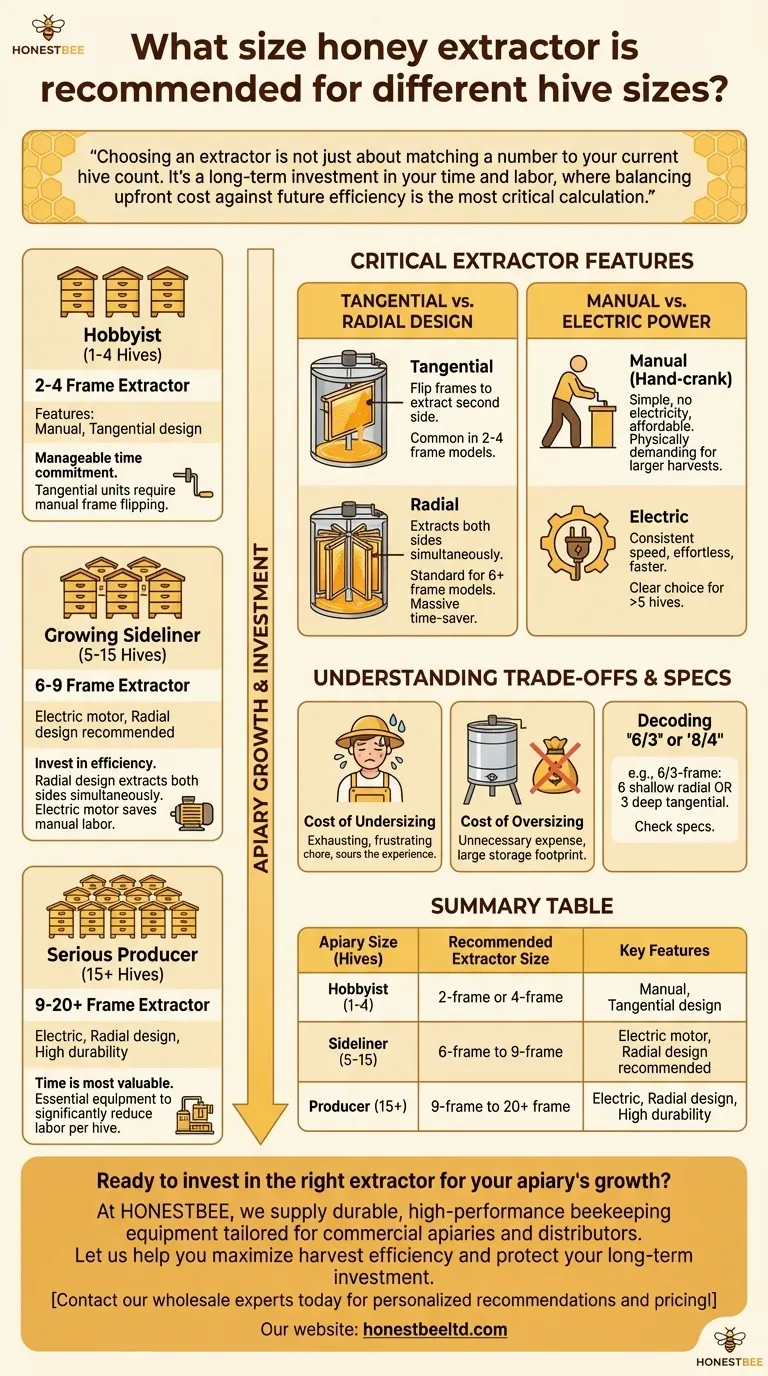
Related Products
- 8-Frame Electric Self-Reversing Honey Extractor Spinner for Commercial Honey Extraction Equipment
- HONESTBEE 6 Frame Three Use Electric Honey Extractor for Beekeeping
- 6 Frame Manual Stainless Steel Honey Extractor Beekeeping Equipment
- 40 Frame Commercial Electric Honey Extractor for Beekeeping
- Commercial Electric 12 Frame Honey Extractor Spinner Motorized Honey Extractor
People Also Ask
- How do automatic honey extractors function? Achieve High-Efficiency Honey Harvesting
- What should a beekeeper do after extracting honey from supers? A Guide to Harvest Management
- What factors should be considered when choosing the size of a honey extractor? Maximize Your Harvest Efficiency
- What is a honey extractor and how does it benefit beekeepers? Boost Honey Yield & Hive Health
- What are the size and power variations in honey extractors? Optimize Your Harvesting Efficiency



